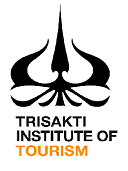Satay as a Culinary Heritage of Indonesian Gastronomy
Abstract
Satay is Indonesia's gastronomic culinary heritage that needs to be preserved because it has excellent potential for tourism development. This aims to study the characteristics of satay and what is done to preserve satay as Indonesia's gastronomic culinary heritage. This research is qualitative descriptive. The data used are primary data obtained from direct interviews with 20 satay traders in Yogyakarta, ten chefs of 4-star hotels in Yogyakarta, and the Yogyakarta Special Region Tourism Office. Data collection techniques use interview, observation, and documentation techniques. Data analysis techniques in this study are reduction, presentation, data analysis, and conclusions. The results showed satay food as a culinary heritage of Indonesian gastronomy has a diversity of both types and flavors obtained from different ingredients, spices, and concoctions. Further development is needed to preserve satay so that it becomes culinary that is recognized as a world culinary heritage by publishing Indonesian satay reference books and web/blogs and actively promoting it as an Indonesian culinary destination at regional, national, and international levels. Increase the active role of the government and all stakeholders in Pentahelix in providing information and promotion to increase the popularity of satay as Indonesia's gastronomic culinary heritage.
Keywords: Satay, Gastronomy, Culinary heritage, Preserved










